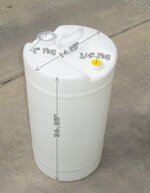keepmehumblelord
Full Member
- Jan 10, 2013
- 109
- 35
- Detector(s) used
- Tesoro compadre, bounty hunter
- Primary Interest:
- All Treasure Hunting
So here is the debate. Please provide proof or statistics or evidence of why it is to your answer. CAN DRY WASHING COMMERCIALLY BE PROFITALLY DONE IN ARIZONA TO AVOID THE NEED FOR MASSIVE AMOUNTS OF WATER? IF SO PLEASE EXPLAIN THE LOSS COMPARED TO WET WASHING AND VARIATIONS OF SOIL AND ARE SOME SOILS NOT DRYWASHABLE. EXAMPLE THE RED DIRT IN ARIZONA. ARE THERE EFFECTIVE AND CHEAP METHODS OF DRYING YOUR DIRT OUT WITHIN A 24 HR PERIOD? IF YOU KNOW SOMEONE OR HAVE DONE THIS PLEASE EXPLAIN THE PROS AND CONS AND WHAT NEEDS TO BE DONE TO MAKE IT EFFICENT ETC... THANKS!!! 
BY THE WAY MANY HAVE SAID THAT COMMERCIAL DRY WASHING WAS TO DIFFICULT BECAUSE AS YOU GO UNDER A FEW FEET OF SOIL MOISTURE CONTENT IS STRONG. OTHERS SAY DRYING THE MATERIAL IS THE ONLY WAY TO GO BUT I HAVENT HEARD OF ANY EFFICIENT WAYS. OTHERS SAY WET WASHING IS THE ONLY WAY TO GO. SO WHAT DO YOU THINK?

BY THE WAY MANY HAVE SAID THAT COMMERCIAL DRY WASHING WAS TO DIFFICULT BECAUSE AS YOU GO UNDER A FEW FEET OF SOIL MOISTURE CONTENT IS STRONG. OTHERS SAY DRYING THE MATERIAL IS THE ONLY WAY TO GO BUT I HAVENT HEARD OF ANY EFFICIENT WAYS. OTHERS SAY WET WASHING IS THE ONLY WAY TO GO. SO WHAT DO YOU THINK?
Upvote
0






